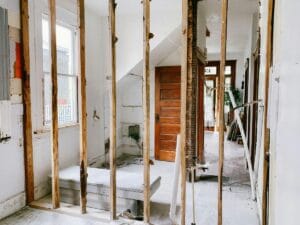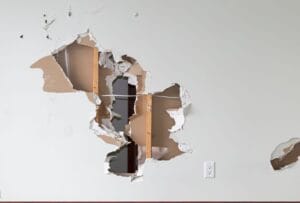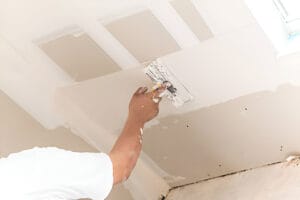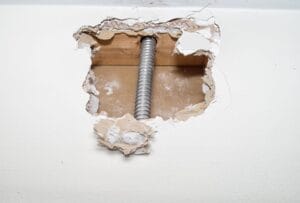Fix Large Holes in Drywall – Encountering large holes in drywall can be a daunting challenge. But before rushing to replace entire sections, consider strategic repairs. Brilliant Renovation LLC shares effective methods for seamlessly fixing these breaches, ensuring durability and aesthetic appeal.
Gathering the Right Tools
- Drywall saw: Essential for cutting clean edges around the hole.
- Joint compound and drywall tape: Fundamental for patching and finishing.
- Plywood or 1×3 lumber: Key for creating a sturdy backing.
- Utility knife and putty knife: Critical for precise cutting and smooth spreading.
- Sandpaper: Vital for achieving a smooth surface.
Step-by-Step Guide
1. Preparing the Area
To make the fix better, start by cleaning the damaged area, ensuring there is no loose debris. Then, use a utility knife to cut around the hole, creating a clean, square area.
2. Installing the Support
Measure and cut your plywood or lumber to fit within the hole, ensuring it extends beyond the edges by a few inches. Secure it inside the hole using drywall screws for a robust support.
3. Cutting and Installing the Drywall Patch
Next, cut a piece of drywall to fit the newly squared hole precisely. Secure it to the wooden backing with drywall screws. Ensure it’s flush with the existing wall.
4. Taping and Applying Joint Compound
Place drywall tape over the seams to bridge the gap between the patch and the existing wall. Smoothly apply joint compound over the taped seams with a putty knife. Let it dry, then sand it down until smooth. Apply a second coat of compound if necessary, sand again, and finish by painting the area to match the wall.
Pro Tips for a Seamless Finish
- Feathering the edges: Ensure each layer of joint compound is spread more expansive than the last to blend the repair seamlessly with the wall.
- Proper sanding: Sand gently to avoid creating noticeable dips or high spots, achieving a smooth, even surface.
- Primer and paint: Use a quality primer before painting to ensure uniform color and finish.
Avoiding Common Mistakes
- Rushing the process can lead to visible patches and uneven surfaces.
- Over-sanding can damage the repaired area, requiring additional work.
- Skipping the primer can result in mismatched paint jobs.
Conclusion
Fix Large Holes in Drywall requires patience and precision, but it’s an attainable DIY project. You can achieve professional-looking results without replacing the entire with the right tools and steps.









